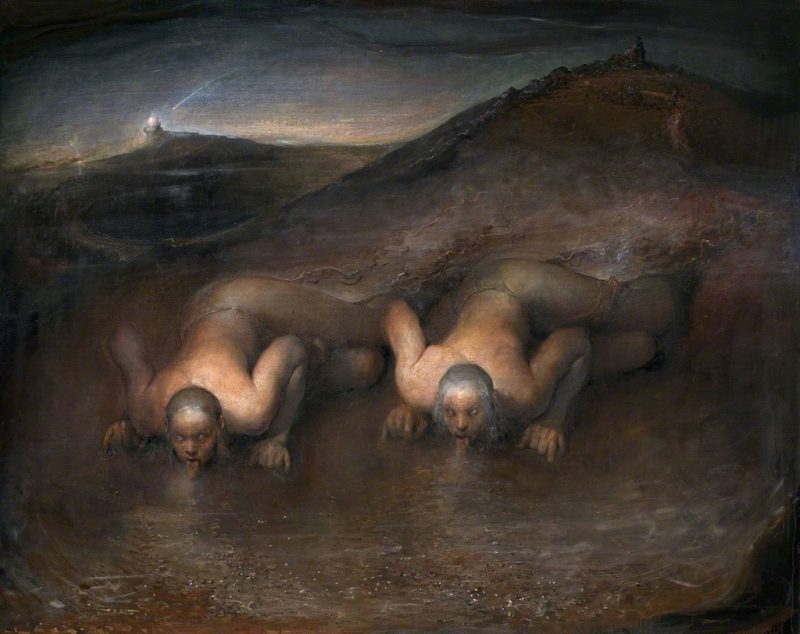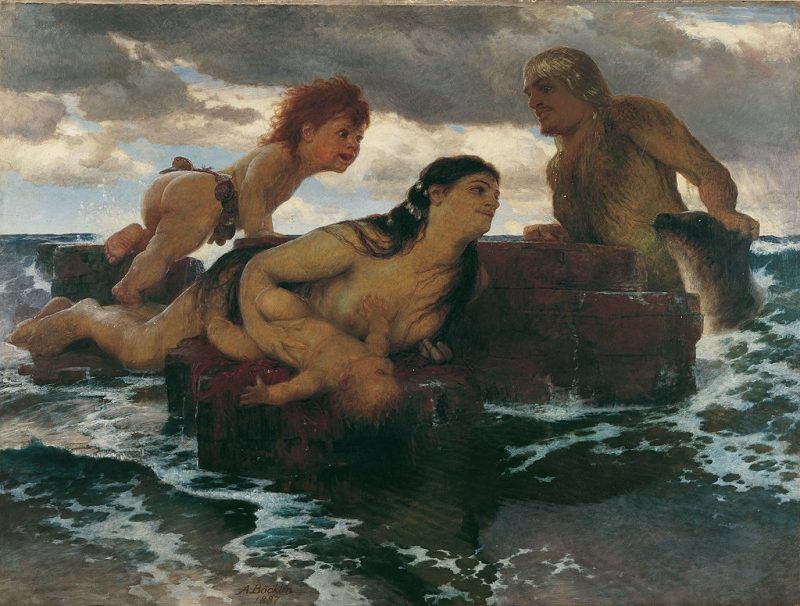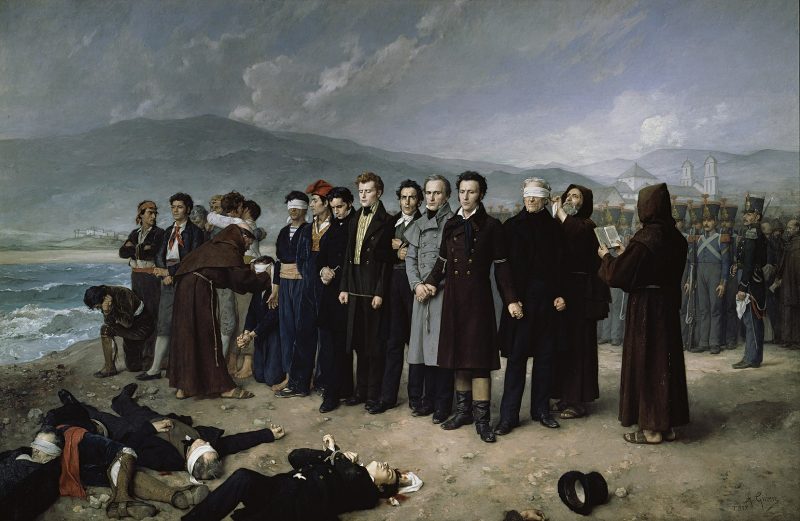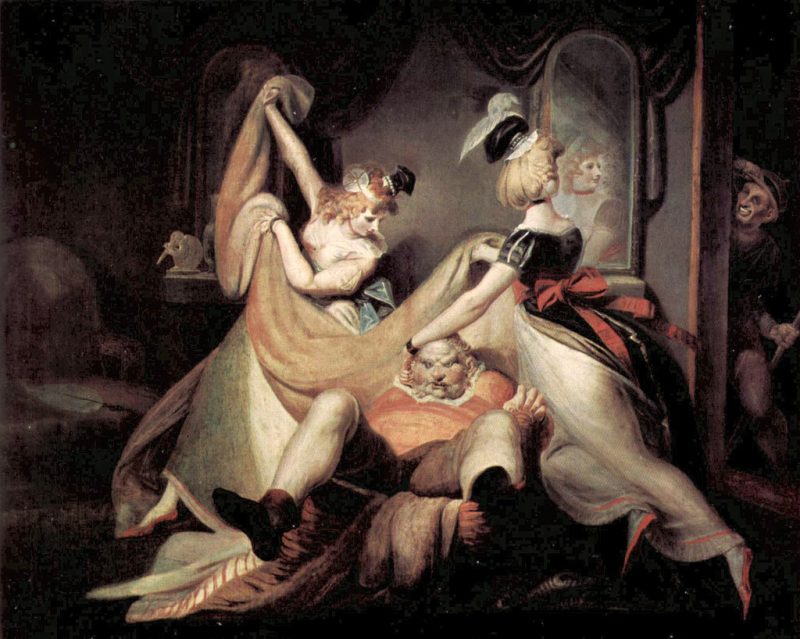At the time Grosz painted this the Great War in Europe had just ended, where roughly 20 million people had died. Another 50 million people worldwide died of the Spanish Flu in 1918. Grosz lived through this nightmare in Germany, a country ravaged by war and economic disaster.
The painting is dedicated to the avant garde playwright Oskar Panizza who wrote the play Liebeskonzil about the first documented syphilis outbreak. Like Grosz, Panizza was critical of the state, the military, and religious authorities. In the painting we see syphilis-ridden mourners in the street. The Grim Reaper sits atop the coffin drinking. There’s a sign over the doorway that reads “Dance Tonight,” implying that there will be a Dance of the Macabre (a familiar scene of skeletons dancing, often depicted in German Medieval art). A priest with patches of rash on his head throws up his arms in a Hail Mary gesture. The frenzy of the mourners, the red paint, and the reeling buildings turn this scene into a veritable hellscape.
About this work Grosz said “In a strange street by night, a hellish procession of dehumanized figures mills, their faces reflecting alcohol, syphilis, plague … I painted this protest against a humanity that had gone insane.”




